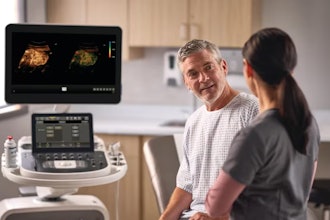
 Photo courtesy of Orkin
Photo courtesy of Orkin Zia Siddiqi, Ph.D., B.C.E., Director of Quality Systems, Orkin, LLC
Zia Siddiqi, Ph.D., B.C.E., Director of Quality Systems, Orkin, LLCIf you haven’t designated pest management as a top priority for your facility, then you should start today. A substantial chunk of an audit score — up to 20 percent — is pest control related, so it can play a major role in your facility receiving a passing grade.
Auditors are looking for more than just a few traps and a fly light to keep pests at bay. They’ll be looking for a pest management plan and records of everything that a facility is doing to prevent pests.
With this in mind, you’ll need to be prepared ahead of time.
The best way to prepare is to implement an Integrated Pest Management (IPM) program, if you don’t have one already, and then carefully document anything and everything related to it, including pest sightings and monitoring devices or traps. While this may sound daunting at first, it isn’t too difficult to keep all of the most important documents together if you’re updating and maintaining your IPM plan on a regular basis.
An IPM program works to suppress pest pressure below threshold around a facility by first using eco-friendly prevention and exclusion tactics instead of chemical solutions whenever possible, which is why it should be updated to meet your facility’s needs on a regular basis. Changes to your program should be included in the documents that are provided to an auditor and show that positive results have been achieved over time.
To ensure that you’re prepared for your next audit, keep these forms of documentation on hand:
1. Food Safety Plan
The first form of documentation that you want to have is an overarching food safety plan, which is essentially an outline of everything that you want to do as part of your IPM program. It identifies risks to food items, lists the processes working to mitigate those risks, identifies monitoring procedures, and establishes actions to be taken if a pest sighting does occur.
2. Service and Material Changes
A strong IPM program needs to be dynamic in order to meet a facility’s ever-changing needs. New technology, shifting seasons, and changes to the environment surrounding your facility can all affect the strategies and tactics that need to be employed, so be adaptable!
When you do make alterations to your IPM program, keep careful records of what exactly was changed and the pest issues that you are hoping to solve. That way, you’ll be able to show that your facility has been closely monitoring pest issues on an ongoing basis.
3. Annual Pest Management Assessments
Going hand in hand with documentation for service and material changes, keeping annual assessments on file will give you a leg up as well. Your pest management professional should already be conducting an annual audit, so get those assessments from them and use them to determine what areas can be improved upon within your facility.
Auditors are going to be looking for these annual assessments, so use them to your advantage. These assessments detail hot spots around your facility and which pests are the biggest threats. If you can demonstrate that you and your staff have been working to resolve those issues over the course of the past year, you’re only helping your case with an auditor.
 Photo courtesy of Orkin
Photo courtesy of Orkin4. Pest Monitoring Devices and Traps
Pest monitoring devices and traps help by pointing out exactly which areas are experiencing the highest levels of pest pressure, which can be used to determine which pests are most affecting a facility.
But although they are extremely helpful, monitoring devices and traps require careful documentation. Solicit your pest management professional for this information, as they are the ones setting and monitoring these tools.
Even the best IPM program can’t prevent every pest, so including monitoring devices and traps demonstrates that you are mindful of this fact and aware that pest management should never be forgotten.
5. Pest Sighting Reports
Anytime a pest sighting occurs, your staff members should write up a pest sighting report that includes the location, pest type and number of pests spotted. Afterwards, document the actions that were taken to resolve the issue, for example identifying the source of infestation.
To take pest sighting reports to the next level, work with your pest management provider to put together a trend report of pest activity that can show that pest sightings decreased with time as you worked to resolve issues.
6. Training and Certification
While you know that your pest management professional is properly trained and certified, an auditor has to see visual evidence. There are three forms to keep on file as proof of training: a valid registration or certification document, written evidence that your pest management professional has been trained to fulfill the needs of your facility-specific IPM program, and evidence of training on IPM and Good Manufacturing Practices (GMPs). That’s all you need from a training and certification standpoint, although it never hurts to include additional documents if you think it can help clarify programs to an auditor.
If you have these six documents ready for an auditor the next time they come by, then you’re going to have a great chance to receive a high score. Because pest management can account for up to 20 percent of your total score, you’ll be off to a flying start on your next audit.
About the author
Dr. Zia Siddiqi is Director of Quality Systems for Orkin. A board certified entomologist with more than 35 years in the industry, Dr. Siddiqi is an acknowledged leader in the field of pest management. For more information, e-mail [email protected] or visit www.orkincommercial.com.























